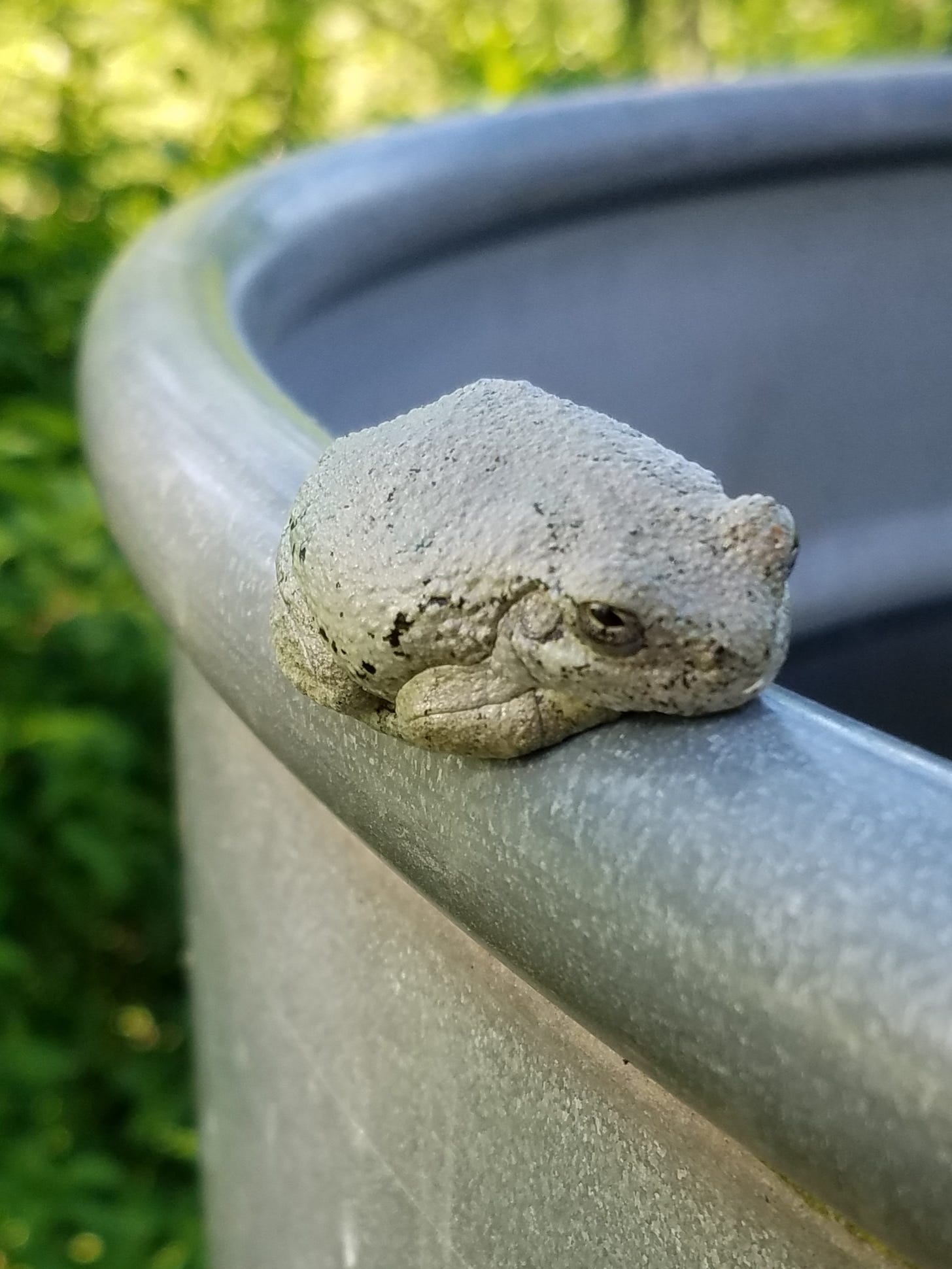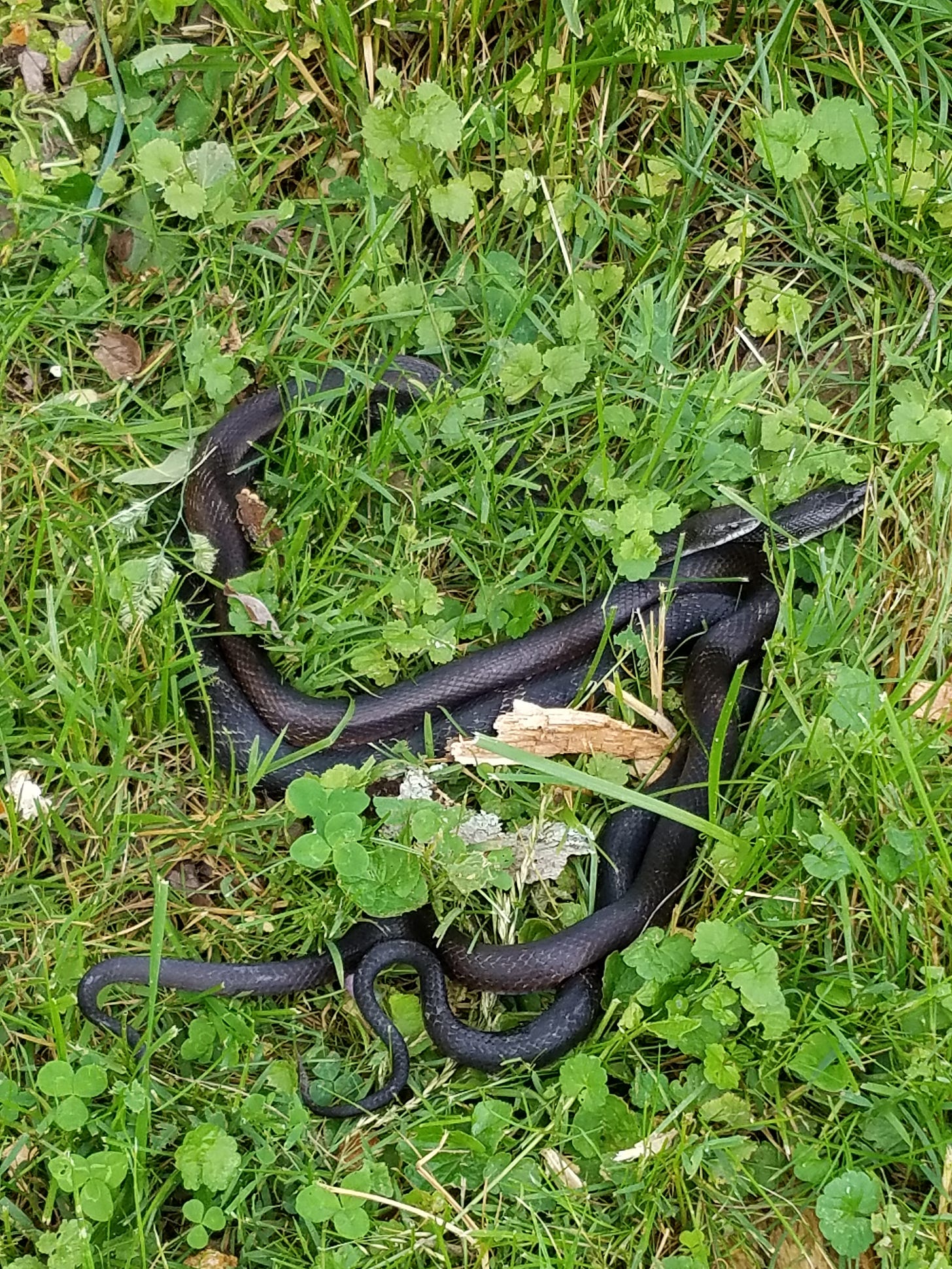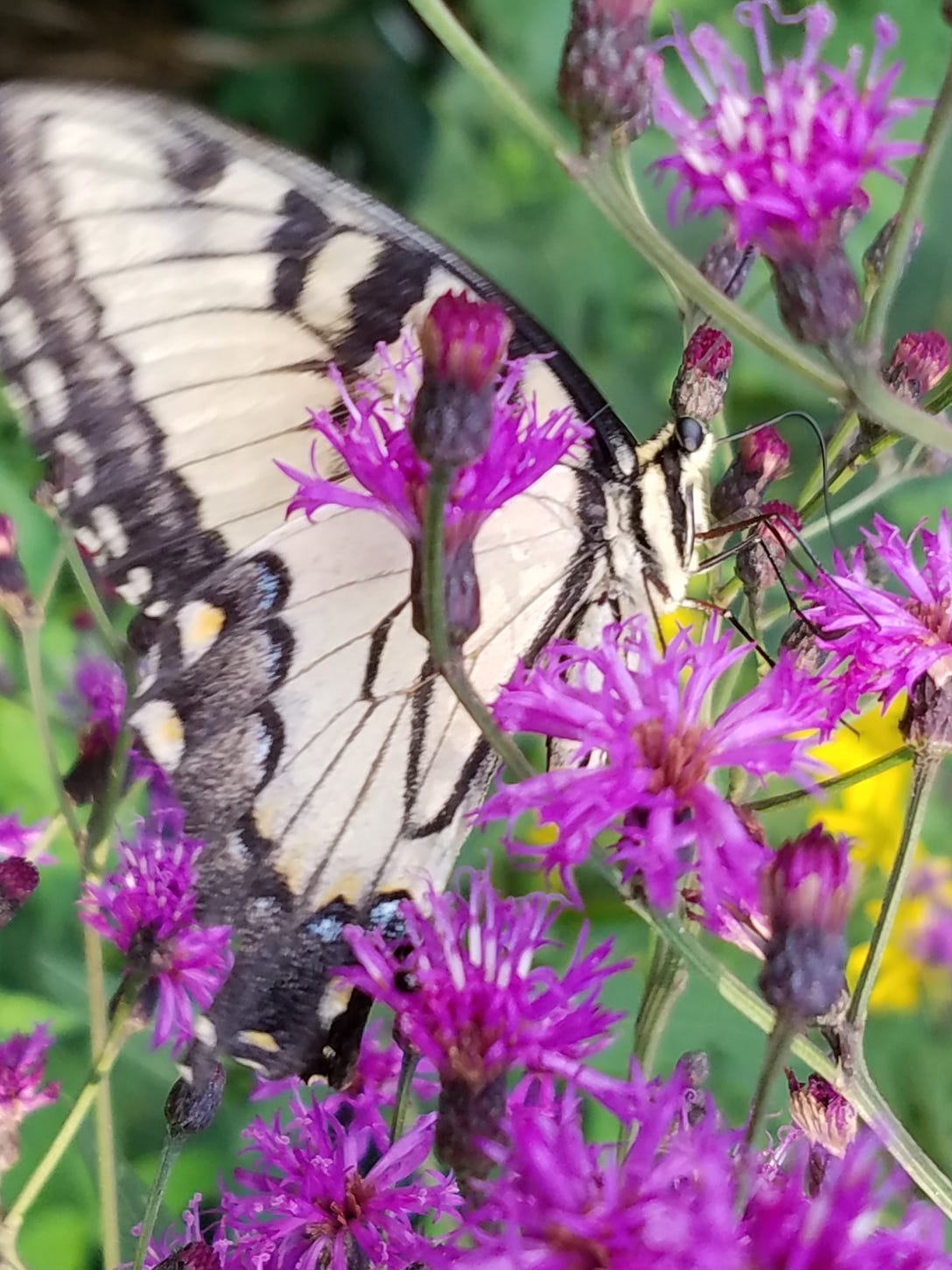Wildlife of 2022
My last two posts have focused on looks, with a generous number of accompanying photos. Why not continue this trend with a third offering featuring the season’s wildlife? This lets writer and readers alike off the hook for thinking very much, leaving the majority of brain cells available to organize the holiday meal or muster arguments for use against politically-deviant relatives.
I can't say for certain whether we're actually getting more wild visitors or if I'm merely paying more attention. Probably the latter. As far as I know I haven't observed any rare or endangered species, but that fact hasn't dampened my enthusiasm for squinting at bugs and poking under leaves.
The top photo is a tree frog, probably a female come to lay eggs in the water trough. Species identification is difficult because the two possibilities look nearly identical. Strangely enough, Cope’s tree frog has 24 chromosome pairs, while the gray tree frog has 48, indicating some genetic tomfoolery somewhere in the distant past. Positive identification is usually made by their calls. More info here.
Rat snakes are great for rodent control, but I really wish they would stay out of the yard. This amorous, exhibitionist couple was observed along the walkway to the house in late May. If the coupling was successful, the female could lay up to 24 eggs (please not in our basement!)
A yellow garden spider hangs out with its prey in this shot from mid-September. The zigzag pattern at the bottom of the photo is called a stabilimentum, or simply referred to as a web decoration. Scientists aren't sure what its purpose is, but guesses include making the web more visible to non-prey animals who might inadvertently crash through, or making the spider appear larger than it is. Or perhaps it's the personalized signature the individual spider uses to identify its art.
Eastern tiger swallowtails are probably the most often encountered butterfly in the garden. They're less easily frightened away than monarchs and skippers, so it's easy to get good shots. Pictured here on liatris, iron weed, and cup plant.
In contrast to the tiger swallowtails, this eight-spotted forester moth was a first for me. Pictured here visiting butterfly weed in the Savanna.
Yes, we can see you.
Not sure about this one. Very small pokemon perhaps? If anyone can offer an identification, please comment.












